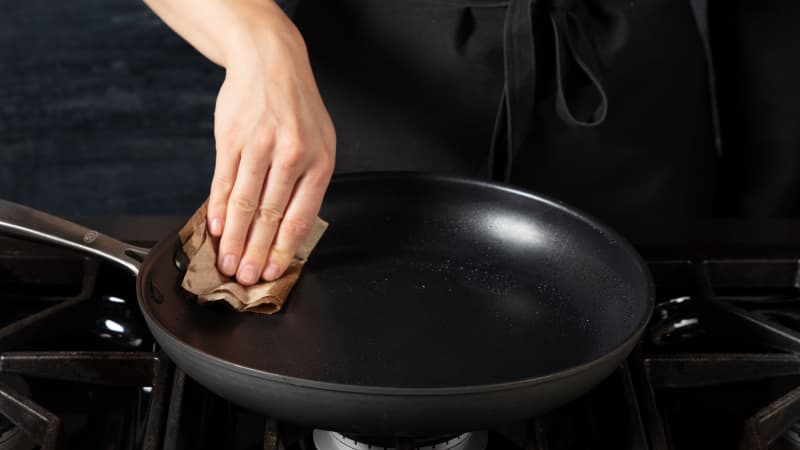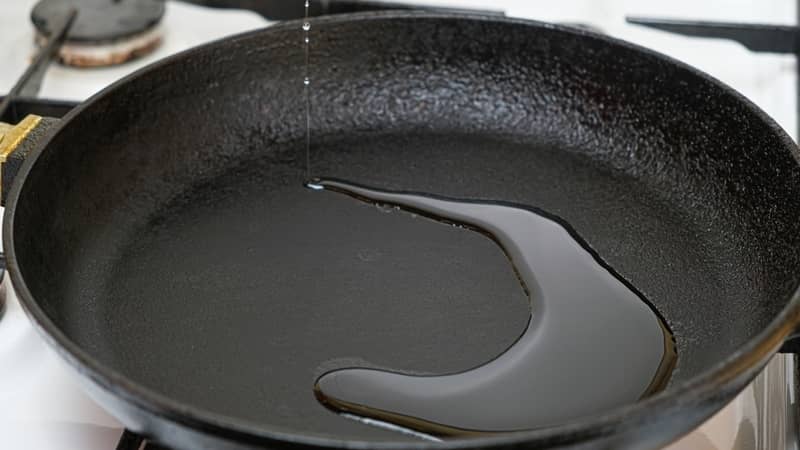When it comes to seasoning cast iron, choosing the right cloth can make all the difference in achieving a beautiful and functional surface. For kitchen professionals, understanding what cloth to use for seasoning cast iron is paramount. This task not only ensures durability but also elevates the flavor of the dishes prepared in these essential cooking tools.
Before diving into the specifics, its worth noting that the process of seasoning cast iron involves applying a layer of oil that is then heated, creating a non-stick surface that is essential for cooking. Therefore, the type of cloth you use plays a significant role in how evenly the oil is applied and how effectively the seasoning adheres to the cast iron.

Understanding the Cloth Requirement
Seasoning involves techniques that require precision, and the cloth you choose must meet certain criteria.
- Should be lint-free to avoid leaving behind any residue.
- Must be absorbent for even application of oil.
- Durable enough to withstand high heat during the seasoning process.
Microfiber cloths are generally a strong choice in the kitchen. Their construction allows for highly effective absorption and application. Moreover, unlike paper towels, microfiber cloths do not leave fibers behind that could lead to an uneven surface finish. This is crucial for professionals focusing on the quality of their cooking equipment.
Best Types of Cloth for Your Cast Iron
Lets look at a few cloth options you may consider:
1. Microfiber Cloths
As mentioned, microfiber is fantastic due to its lint-free nature and high absorbency. They come in various sizes, allowing for versatility depending on the cast iron piece you're working with. For best results, choose a plush microfiber cloth. They ensure that your oil is evenly distributed across the surface.
2. Cotton Rags
If microfiber is not readily available, plain cotton rags can also serve as an effective alternative. Natural fibers provide great absorbency, making it easier to spread a thin layer of oil on your cookware. However, be cautious as cotton rags can sometimes leave lint, so ensure they are thoroughly washed before use.
3. Reusable Paper Towels
Some kitchen professionals opt for reusable paper towels that are designed to be absorbent and lint-free. These can be a sustainable choice; however, ensure that they have been tested for high-temperature resistance to avoid any melting or tearing during seasoning.
How to Season Your Cast Iron Properly
Now that weve discussed what cloth to use for seasoning cast iron, its essential to also recognize how to implement the seasoning process correctly. Follow these basic steps to achieve optimal results:
- Preheat the oven to 450F (232C).
- Clean your cast iron with warm soapy water to remove any residual food particles.
- Dry thoroughly to prevent rusting.
- Apply your chosen oil in a thin, even layer using your selected cloth. Aim for a high-smoke point oil like canola, flaxseed, or grapeseed oil.
- Place it upside down in the oven with a baking sheet on the lower rack to catch any drips.
- Bake for at least one hour, then let it cool in the oven.
It's crucial to repeat this process several times to build a durable non-stick surface which is highly favored in professional kitchens.
Maintaining Your Seasoned Cast Iron
Once the seasoning process is complete, maintenance is essential to keep your cast iron cookware in top shape. Regular cleaning with a soft brush or cloth, and minimal soap, will help maintain the seasoning. Here are some maintenance tips to consider. Make it a point to re-season your cookware if you notice food sticking or if rust begins to form.
Challenges Kitchen Professionals Face
Even seasoned chefs sometimes encounter challenges with cast iron. For example, many struggle with spotting the right cloth for seasoning. Pairing the correct cloth with the appropriate oil can significantly impact the cookware's lifespan. It's crucial to keep your cooking style and frequency in mind. For high-volume kitchens, durability and ease of use should guide your selection.

Frequently Asked Questions
1. Can I use olive oil for seasoning?
While olive oil can be used, it has a lower smoke point than other oils like canola or grapeseed. This might lead to a sticky residue rather than a smooth finish.
2. How often should I season my cast iron?
It varies based on usage, but generally, after every few uses or if you notice any wear in the non-stick surface, it's a good idea to re-season.
3. Are there any alternatives for cloth?
If cloth is unavailable, paper towels can serve as a temporary solution. Just ensure they are high-quality and lint-free.
As an Amazon Associate, I earn from qualifying purchases.
To round up, selecting the appropriate cloth is vital in ensuring the longevity and functionality of your seasoned cast iron. By investing the time into properly seasoning and maintaining your cookware, you'll ensure its performance, providing excellent results time after time!
For further guidance on the topic, visit this helpful article on seasoning cast iron cookware.
As an Amazon Associate, I earn from qualifying purchases.






Leave a comment
This site is protected by hCaptcha and the hCaptcha Privacy Policy and Terms of Service apply.